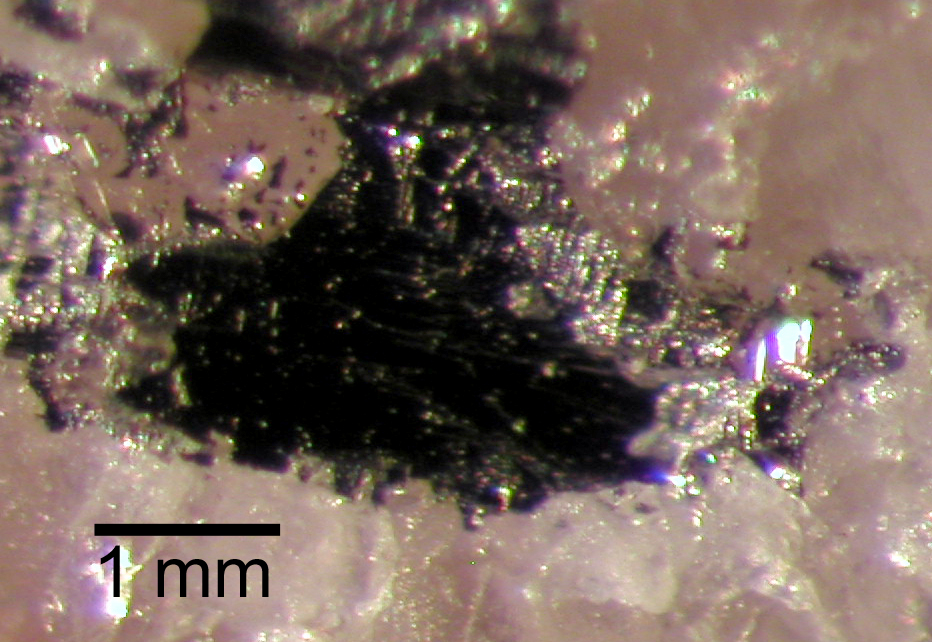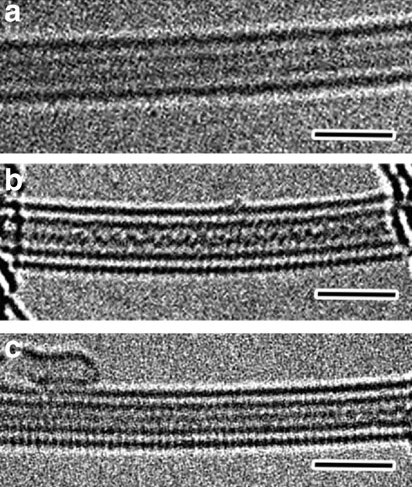|
Tellurium Compounds
Tellurium compounds are compounds containing the element tellurium (Te). Tellurium belongs to the chalcogen (group 16) family of elements on the periodic table, which also includes oxygen, sulfur, selenium and polonium: Tellurium and selenium compounds are similar. Tellurium exhibits the oxidation states −2, +2, +4 and +6, with +4 being most common. Tellurides Reduction of Te metal produces the Telluride (chemistry), tellurides and polytellurides, Ten2−. The −2 oxidation state is exhibited in binary compounds with many metals, such as zinc telluride, , produced by heating tellurium with zinc. Decomposition of with hydrochloric acid yields hydrogen telluride (), a highly unstable analogue of the other chalcogen hydrides, Water (molecule), , Hydrogen sulfide, and Hydrogen selenide, : is unstable, whereas salts of its conjugate base [TeH]− are stable. Halides The +2 oxidation state is exhibited by the dihalides, , and . The dihalides have not been obtained in ... [...More Info...] [...Related Items...] OR: [Wikipedia] [Google] [Baidu] |
Tellurium
Tellurium is a chemical element with the symbol Te and atomic number 52. It is a brittle, mildly toxic, rare, silver-white metalloid. Tellurium is chemically related to selenium and sulfur, all three of which are chalcogens. It is occasionally found in native form as elemental crystals. Tellurium is far more common in the Universe as a whole than on Earth. Its extreme rarity in the Earth's crust, comparable to that of platinum, is due partly to its formation of a volatile hydride that caused tellurium to be lost to space as a gas during the hot nebular formation of Earth.Anderson, Don L.; "Chemical Composition of the Mantle" in ''Theory of the Earth'', pp. 147-175 Tellurium-bearing compounds were first discovered in 1782 in a gold mine in Kleinschlatten, Transylvania (now Zlatna, Romania) by Austrian mineralogist Franz-Joseph Müller von Reichenstein, although it was Martin Heinrich Klaproth who named the new element in 1798 after the Latin 'earth'. Gold telluride minera ... [...More Info...] [...Related Items...] OR: [Wikipedia] [Google] [Baidu] |
Teflic Acid
Teflic acid is the chemical compound with the formula . This strong acid is related to orthotelluric acid, . Teflic acid has a slightly distorted octahedral geometry. Preparation Teflic acid was accidentally discovered by Engelbrecht and Sladky. Their synthesis did not yield the anticipated telluryl fluoride , but a mixture of volatile telluric compounds, ''i.e.'' :Engelbrecht, A.; Sladky, F. "Pentafluoro-orthotellursaure, " ''Angewandte Chemie'' 1964. ''76''(9), 379-380, . : (25%) Teflic acid can also be prepared from fluorosulfonic acid and barium tellurate:Holleman, A. F.; Wiberg, E. "Inorganic Chemistry" Academic Press: San Diego, 2001. . : It is also the first hydrolysis product of tellurium hexafluoride: : Teflates The conjugate base of teflic acid is called the teflate anion, (not to be confused with triflate). Many teflates are known, examples being and the acid anhydride . Pyrolysis of the boron compound gives the dimer . : The teflate anion is known to resist oxi ... [...More Info...] [...Related Items...] OR: [Wikipedia] [Google] [Baidu] |
Zintl Phase
In chemistry, a Zintl phase is a product of a reaction between a group 1 ( alkali metal) or group 2 (alkaline earth metal) and main group metal or metalloid (from groups 13, 14, 15, or 16). It is characterized by intermediate metallic/ ionic bonding. Zintl phases are a subgroup of brittle, high-melting intermetallic compounds that are diamagnetic or exhibit temperature-independent paramagnetism and are poor conductors or semiconductors.Sevov, S.C., Zintl Phases in Intermetallic Compounds, Principles and Practice: Progress, Westbrook, J.H.; *Freisher, R.L.: Eds.; John Wiley & Sons. Ltd., Chichester, England, 2002, pp. 113-13Slavi Chapter/ref> This type of solid is named after German chemist Eduard Zintl who investigated them in the 1930s. The term "Zintl Phases" was first used by Laves in 1941. In his early studies, Zintl noted that there was an atomic volume contraction upon the formation of these products and realized that this could indicate cation formation. He sugges ... [...More Info...] [...Related Items...] OR: [Wikipedia] [Google] [Baidu] |
Ionic Conductivity (solid State)
Ionic conductivity (denoted by ) is a measure of a substance's tendency towards ionic conduction. Ionic conduction is the movement of ions. The phenomenon is observed in solids and solutions. Ionic conduction is one mechanism of current. In crystalline solids In most solids, ions rigidly occupy fixed positions, strongly embraced by neighboring atoms or ions. In some solids, selected ions are highly mobile allowing ionic conduction. The mobility increases with temperature. Materials exhibiting this property are used in batteries. A well-known ion conductive solid is β''-alumina ("BASE"), a form of aluminium oxide that has channels through which sodium cations can hop. When this ceramic is complexed with a mobile ion, such as Na+, it behaves as so-called fast ion conductor. BASE is used as a membrane in several types of molten salt electrochemical cell. In glasses Ion conduction in disordered solids like glasses, polymers, nanocomposites, defective crystals and other d ... [...More Info...] [...Related Items...] OR: [Wikipedia] [Google] [Baidu] |
Catenation
In chemistry, catenation is the bonding of atoms of the same element into a series, called a ''chain''. A chain or a ring shape may be ''open'' if its ends are not bonded to each other (an open-chain compound), or ''closed'' if they are bonded in a ring (a cyclic compound). The words ''to catenate'' and ''catenation'' reflect the Latin root '' catena'', "chain". Carbon Catenation occurs most readily with carbon, which forms covalent bonds with other carbon atoms to form longer chains and structures. This is the reason for the presence of the vast number of organic compounds in nature. Carbon is most well known for its properties of catenation, with organic chemistry essentially being the study of catenated carbon structures (and known as catenae). Carbon chains in biochemistry combine any of various other elements, such as hydrogen, oxygen, and biometals, onto the backbone of carbon. However, carbon is by no means the only element capable of forming such catenae, and sever ... [...More Info...] [...Related Items...] OR: [Wikipedia] [Google] [Baidu] |
Polysulfide
Polysulfides are a class of chemical compounds containing chains of sulfur atoms. There are two main classes of polysulfides: inorganic and organic. Among the inorganic polysulfides, there are ones which contain anions, which have the general formula . These anions are the conjugate bases of the hydrogen polysulfides . Organic polysulfides generally have the formulae , where R = alkyl or aryl. Polysulfide salts and complexes The alkali metal polysulfides arise by treatment of a solution of sulfide, e.g. sodium sulfide, with elemental sulfur: : In some cases, these anions have been obtained as organic salts, which are soluble in organic solvents. The energy released in the reaction of sodium and elemental sulfur is the basis of battery technology. The sodium–sulfur battery and the lithium–sulfur battery require high temperatures to maintain liquid polysulfide and -conductive membranes that are unreactive toward sodium, sulfur, and sodium sulfide. Polysulfides are ligands ... [...More Info...] [...Related Items...] OR: [Wikipedia] [Google] [Baidu] |
Hydrogen Sulfide
Hydrogen sulfide is a chemical compound with the formula . It is a colorless chalcogen-hydride gas, and is poisonous, corrosive, and flammable, with trace amounts in ambient atmosphere having a characteristic foul odor of rotten eggs. The underground mine gas term for foul-smelling hydrogen sulfide-rich gas mixtures is ''stinkdamp''. Swedish chemist Carl Wilhelm Scheele is credited with having discovered the chemical composition of purified hydrogen sulfide in 1777. The British English spelling of this compound is hydrogen sulphide, a spelling no longer recommended by the Royal Society of Chemistry or the International Union of Pure and Applied Chemistry. Hydrogen sulfide is toxic to humans and most other animals by inhibiting cellular respiration in a manner similar to hydrogen cyanide. When it is inhaled or it or its salts are ingested in high amounts, damage to organs occurs rapidly with symptoms ranging from breathing difficulties to convulsions and death. Despite this, ... [...More Info...] [...Related Items...] OR: [Wikipedia] [Google] [Baidu] |
Telluric Acid
Telluric acid is a chemical compound with the formula , often written as . It is a white crystalline solid made up of octahedral molecules which persist in aqueous solution. In the solid state, there are two forms, rhombohedral and monoclinic, and both contain octahedral molecules, containing one hexavalent tellurium (Te) atom in the +6 oxidation state, attached to six hydroxyl (–OH) groups, thus, it can be called tellurium(VI) hydroxide. Telluric acid is a weak acid which is dibasic, forming tellurate salts with strong bases and hydrogen tellurate salts with weaker bases or upon hydrolysis of tellurates in water.Holleman, A. F.; Wiberg, E. "Inorganic Chemistry" Academic Press: San Diego, 2001. . It is used as tellurium-source in the synthesis of oxidation catalysts. Preparation Telluric acid is formed by the oxidation of tellurium or tellurium dioxide with a powerful oxidising agent such as hydrogen peroxide, chromium trioxide or sodium peroxide. : Crystallization of te ... [...More Info...] [...Related Items...] OR: [Wikipedia] [Google] [Baidu] |
Tellurous Acid
Tellurous acid is an inorganic compound with the formula H2TeO3. It is the oxoacid of tellurium(IV). This compound is not well characterized. An alternative way of writing its formula is (HO)2TeO. In principle, tellurous acid would form by treatment of tellurium dioxide with water, that is by hydrolysis. The related conjugate base is well known in the form of several salts such as potassium hydrogen tellurite, KHTeO3. Properties In contrast to the analogous compound selenous acid Selenous acid (or selenious acid) is the chemical compound with the formula . Structurally, it is more accurately described by . It is the principal oxoacid of selenium; the other being selenic acid. Formation and properties Selenous acid is ..., tellurous acid is only metastable. Most tellurite salts contain the ion. Oxidation of its aqueous solution with hydrogen peroxide gives the tellurate ion. It is usually prepared as an aqueous solution where it acts as a weak acid. :H2TeO3 + H2O H ... [...More Info...] [...Related Items...] OR: [Wikipedia] [Google] [Baidu] |
Tellurium Dioxide
Tellurium dioxide (TeO2) is a solid oxide of tellurium. It is encountered in two different forms, the yellow orthorhombic mineral tellurite, β-TeO2, and the synthetic, colourless tetragonal (paratellurite), α-TeO2. Most of the information regarding reaction chemistry has been obtained in studies involving paratellurite, α-TeO2.W.R.McWhinnie (1995) ''Tellurium - Inorganic chemistry'' Encyclopedia of Inorganic Chemistry Ed. R. Bruce King (1994) John Wiley & Sons Preparation Paratellurite, α-TeO2, is produced by reacting tellurium with O2: :Te + O2 → TeO2 An alternative preparation is to dehydrate tellurous acid, H2TeO3, or to thermally decompose basic tellurium nitrate, Te2O4·HNO3, above 400 °C. Physical properties The longitudinal speed of sound in Tellurium dioxide is at around room temperature. Chemical properties TeO2 is barely soluble in water and soluble in strong acids and alkali metal hydroxides. It is an amphoteric substance and therefore can act bot ... [...More Info...] [...Related Items...] OR: [Wikipedia] [Google] [Baidu] |
Tellurium Tetraiodide
Tellurium tetraiodide ( Te I4) is an inorganic chemical compound A chemical compound is a chemical substance composed of many identical molecules (or molecular entities) containing atoms from more than one chemical element held together by chemical bonds. A molecule consisting of atoms of only one ele .... It has a tetrameric structure which is different from the tetrameric solid forms of TeCl4 and TeBr4. In TeI4 the Te atoms are octahedrally coordinated and edges of the octahedra are shared. TeI4 can be prepared from the elements or by reacting Te and iodomethane, CH3I. In the vapour TeI4 dissociates:''Inorganic Chemistry'',Egon Wiberg, Arnold Frederick Holleman Elsevier 2001 :TeI4 → TeI2 + I2 It is a conductor when molten, dissociating into the ions TeI3+ and I−. In solvents with donor properties such as acetonitrile, CH3CN ionic complexes are formed which make the solution conducting: :TeI4 + 2 CH3CN → (CH3CN)2TeI3+ + I− References Iodides Tel ... [...More Info...] [...Related Items...] OR: [Wikipedia] [Google] [Baidu] |





